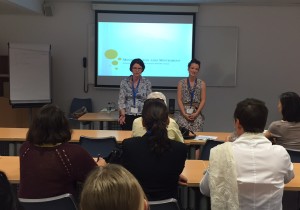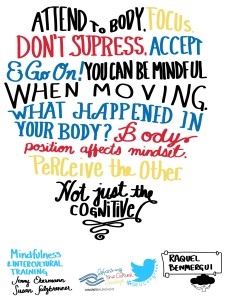Leadership, Diversity and Mindfulness applied to sports
Last Saturday at the SIETAR Europa conference, I had the chance to animate a wonderful workshop with a fellow interculturalist and friend Susan Salzbrenner from Fit Across Cultures.  As we both have a strong background in sports and did not want to engage in more theories and “brain” focused presentations and activities, we decided to animate a session connecting our two brains[1]: the cranial one which we know and the so-called “enteric brain” located in our bellies (in the gut).
As we both have a strong background in sports and did not want to engage in more theories and “brain” focused presentations and activities, we decided to animate a session connecting our two brains[1]: the cranial one which we know and the so-called “enteric brain” located in our bellies (in the gut).
How did we do that?
Well, by linking intercultural training and the importance of “embodiment[2]” and mindfulness (moment to moment awareness) to athlete’s realities and movement. After a moment of mindful walking and grounding and by means of a very practical “experiment” we had the participants tune into themselves and connect with their feelings and body experience in different challenging intercultural and interpersonal situations.
Although this is far from being easy, the participants were wonderful and shared what was going on for them. Being able to relate to your bodily experience can actually inform you even before your thoughts come in, when it comes to decisions, dealing with particular emotional situations or simply in our daily lives. In the context of sports, athletes also have to train mentally in order to be able to resist pressure in competitions and perform at their best. Being in sync with their bodies helps them to overcome differences and difficult situations and enables diverse teams – when managed well – to outperform competitors.
What a great learning and what a powerful group! Thanks to all of you who have participated and thanks Raquel Benmergui for the wonderful graphic representations!
Jenny
[1] Compare to : Amnon Buchbinder on Philip Shepherd’s “Out of our heads”
[2] In the sense that: “We make the experience of culture through our bodies”, see Ida Castiglioni: “Embodiment of Culture”

